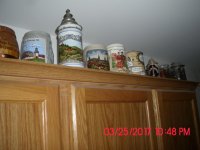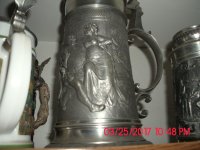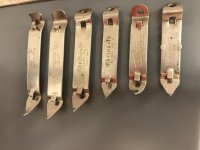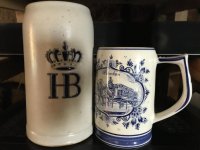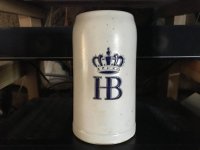I have no special knowledge of steins, but I used to be German, so I can confirm that you got some good information here.
Probably in excess of 95% of decorative beer mugs (stein, by the way, is NOT the German word for these

) are tourist stuff that you buy in Southern Germany in the same shops where you buy postcards and other souvenir stuff; I wouldn't be surprised if by now some of them came from China. Most Germans wouldn't buy them, but especially American and Japanese tourists lay down big bucks for them. Those are for putting on your shelf as trip mementos, not for drinking. And those are the ones which Rpg is talking about above, that have no collector and little resale value.
The older historical style which Dennis described are a different story. Those are more the stuff for antiquities shops and collectors meets, and the older the better. I'm sure valuable old ones change hands at flea markets for pennies all the time because people can't pick them out of all the worthless souvenir stuff. As far as I know, their heyday was the late 19th century and the time up to WW I, but I'm really not knowledgeable about any more details.
Btw., usually the German pubs and beer gardens get the glass half-liter and liter mugs in which beer is actually served in bulk from the breweries that supply their beer; the cost of breakage and theft of those (especially in the heavy tourist areas) is already calculated into the price of a "Mass" (a liter of beer), so don't feel bad if in a drunken stupor you should walk off with one.

On a final note, all this applies to Southern Germany, especially Bavaria. In the normal Northern part of Germany where I come from, we drink beer from bottles and ordinary glasses, and the pubs expect to keep their glassware, and a decorative beer stein is just as exotic as it would be in Japan





